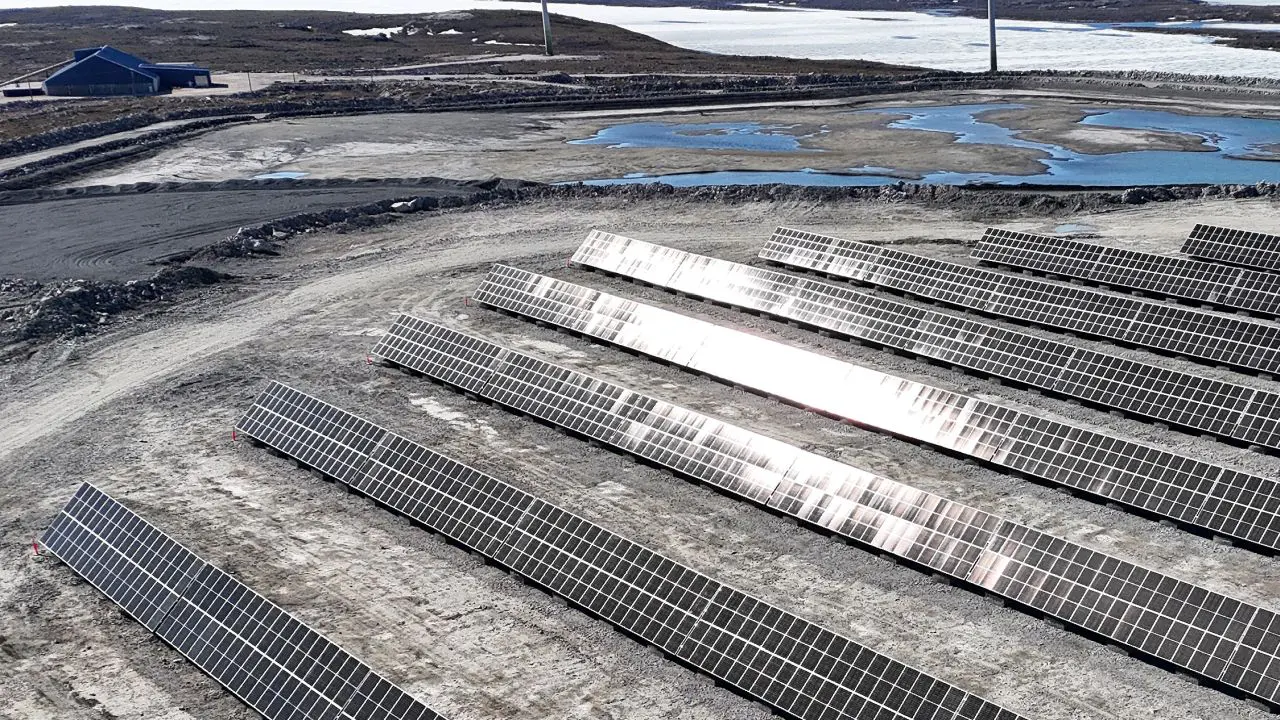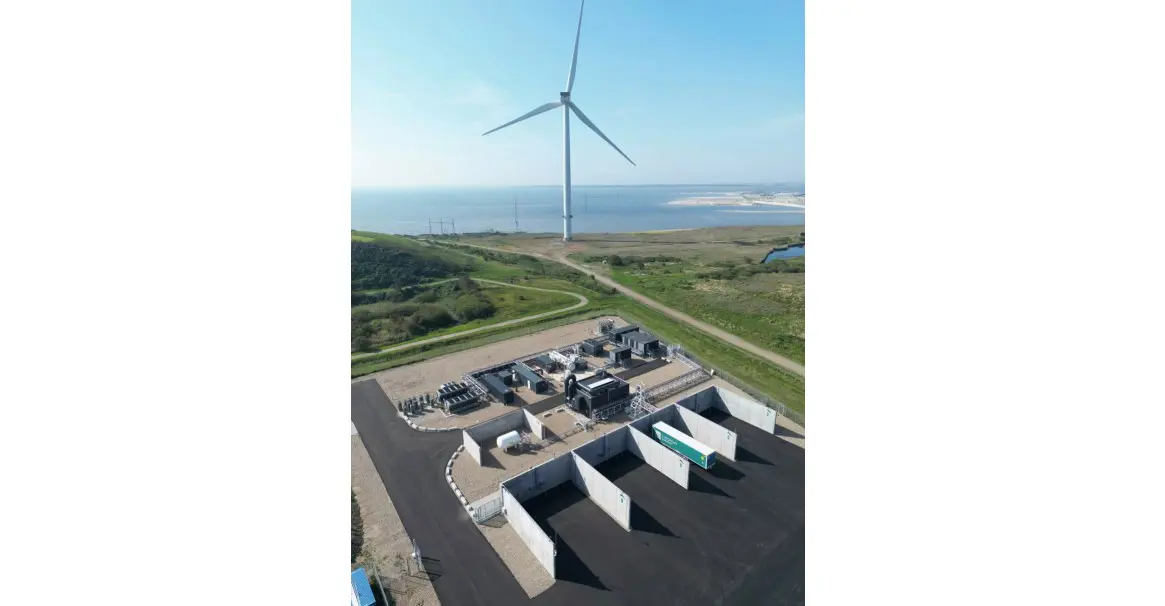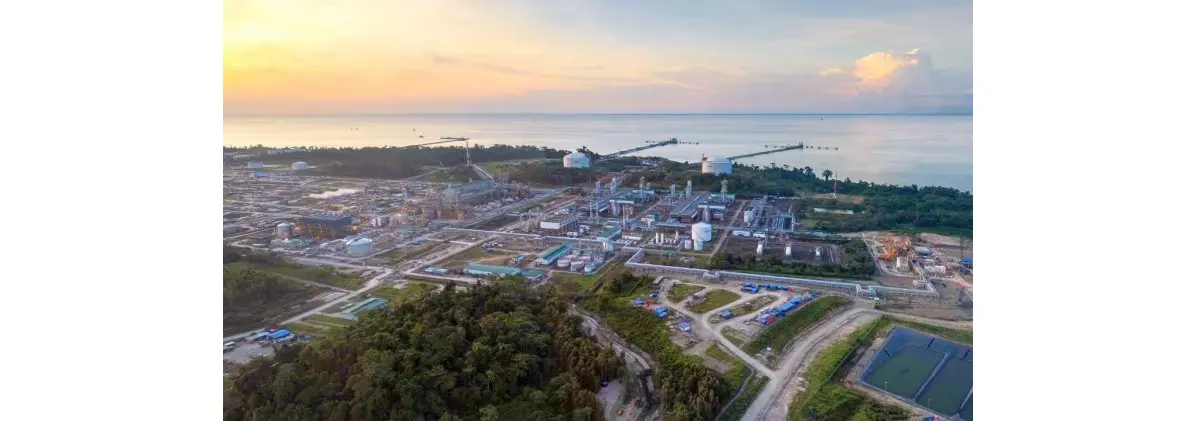
Rio Tinto’s New Solar-Powered Diamond Mine

Rio Tinto’s Diavik Diamond Mine (Diavik) has completed installation of its 3.5-MW capacity solar power plant in Canada’s Northwest Territories. The project represents the largest off-grid solar power plant across Canada’s territories.
The 6620-panel facility is expected to generate 4.2 million kWh of solar energy annually, reducing diesel consumption at Diavik by 264,172 gallons (1 million liters) per year and cutting greenhouse gas (GHG) emissions by 3197 tons (2900 tonnes) of carbon dioxide equivalent (CO2e). This is comparable to removing 630 cars from the road each year.
The solar power plant will provide up to 25% of Diavik’s electricity during closure work, with commercial production at the mine expected to end in 2026 and closure to run until 2029. The facility is equipped with bi-facial panels that not only generate energy from direct sunlight, but also from the light that reflects off the snow that covers Diavik for most of the year.
The solar project complements a wind power plant at Diavik that has been operating since 2012 and is the largest wind power installation in Canada’s North, having generated more than 195 million kWh of electricity since activation.
“The largest off-grid solar power plant in Canada’s North is our latest commitment to the environment we live and work in and will improve the energy efficiency of our operations at Diavik,” said Matthew Breen, chief operating officer of Diavik Diamond Mine. “We are proud to lead the way for large-scale renewable energy projects in Canada’s North.”
The project was supported by US$2.42 million in funding from the Government of the Northwest Territories’ Large Emitters GHG Reducing Investment Grant Program.
It is the first project in the Northwest Territories to benefit from funding from the Large Emitters Grant, which sets aside a portion of carbon tax paid by large operations such as Diavik for projects that commit to GHG reduction projects in the territory.
“I commend Rio Tinto for the completion of the largest off-grid solar plant in Canada’s North at the Diavik mine,” said Northwest Territories’ Minister of Infrastructure Caroline Wawzonek. “The project demonstrates Rio Tinto’s leadership when it comes to reducing emissions, and signals potential for leadership in the renewable energy sector in and by the North. The Government of the Northwest Territories is proud to have contributed to the project through the Large Emitters GHG Reducing Investment Grant program, which provides funding to industry to reduce emissions as part of our made-in-the-NWT approach to the federal carbon tax.”
Construction began in February 2024, contracted to Whitehorse-based Solvest Inc. and the Indigenous-owned Tłıchǫ Investment Corporation, with support from Diavik. Approximately 30% of the construction workforce came from the Tłıchǫ Investment Corporation.
“Building off the success of their wind farm constructed in 2012, Diavik has taken another significant step forward in demonstrating the viability of renewable energy for Northern and off-grid mines,” said Chief Executive Officer of Solvest Inc. Ben Power. “Solvest is proud to have had the opportunity to work with our partners at Tłıchǫ Investment Corporation to construct the largest off-grid solar power plant in Canada’s North. We believe this project provides a blueprint to facilitate the integration of solar into mines across Canada and in Northern regions.”
Diavik is working with the Government of the Northwest Territories and community partners to determine how its renewable energy infrastructure can best benefit the region following closure.
Rio Tinto is progressing decarbonization initiatives across its global operations, with the aim of reducing its Scope 1 and 2 GHG emissions by 50% by 2030 and to achieve net zero across its operations by 2050.









